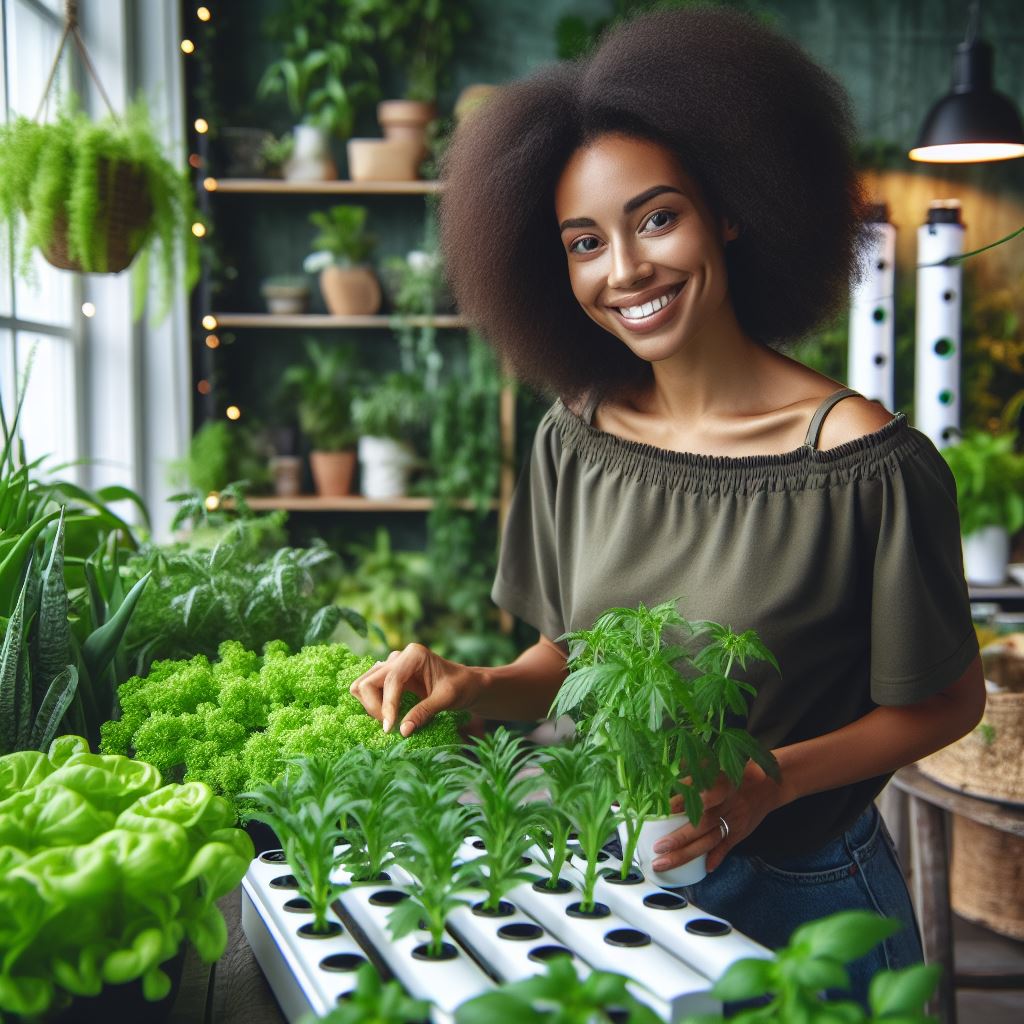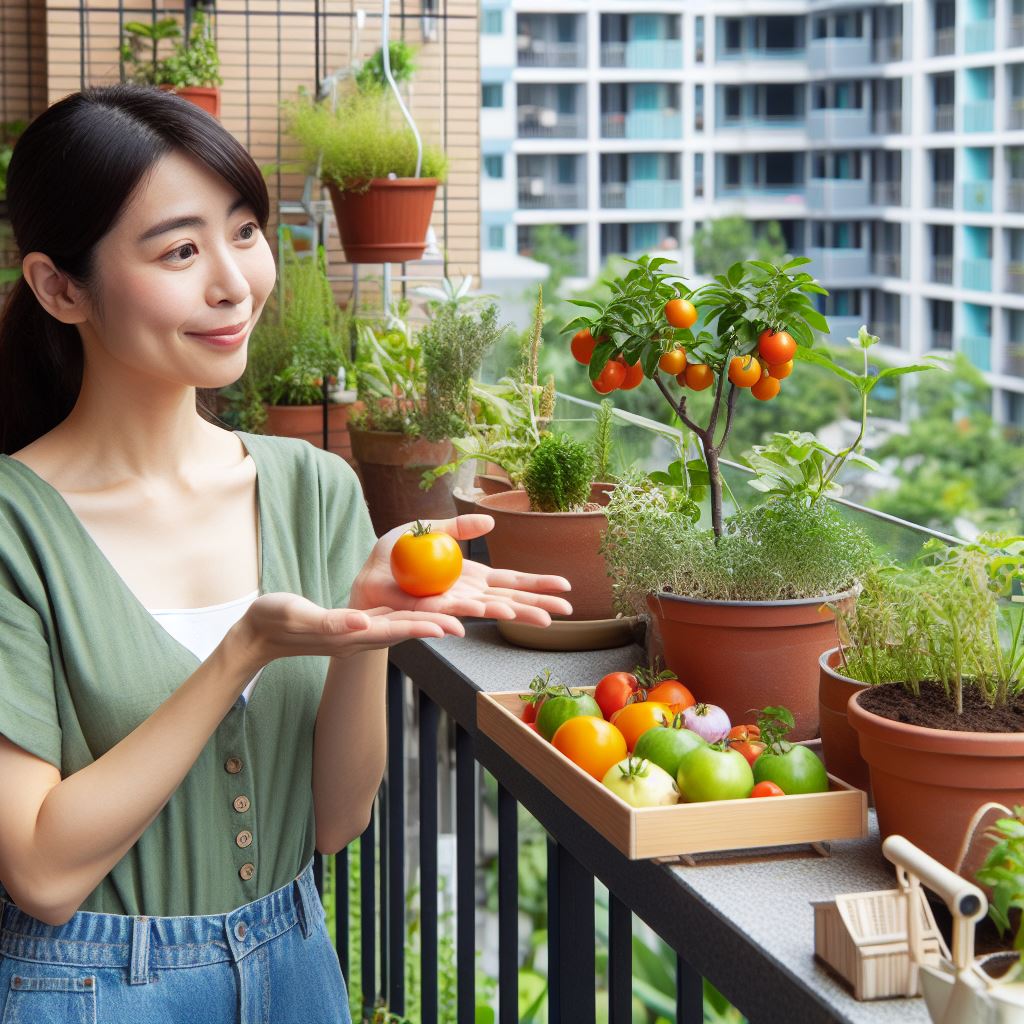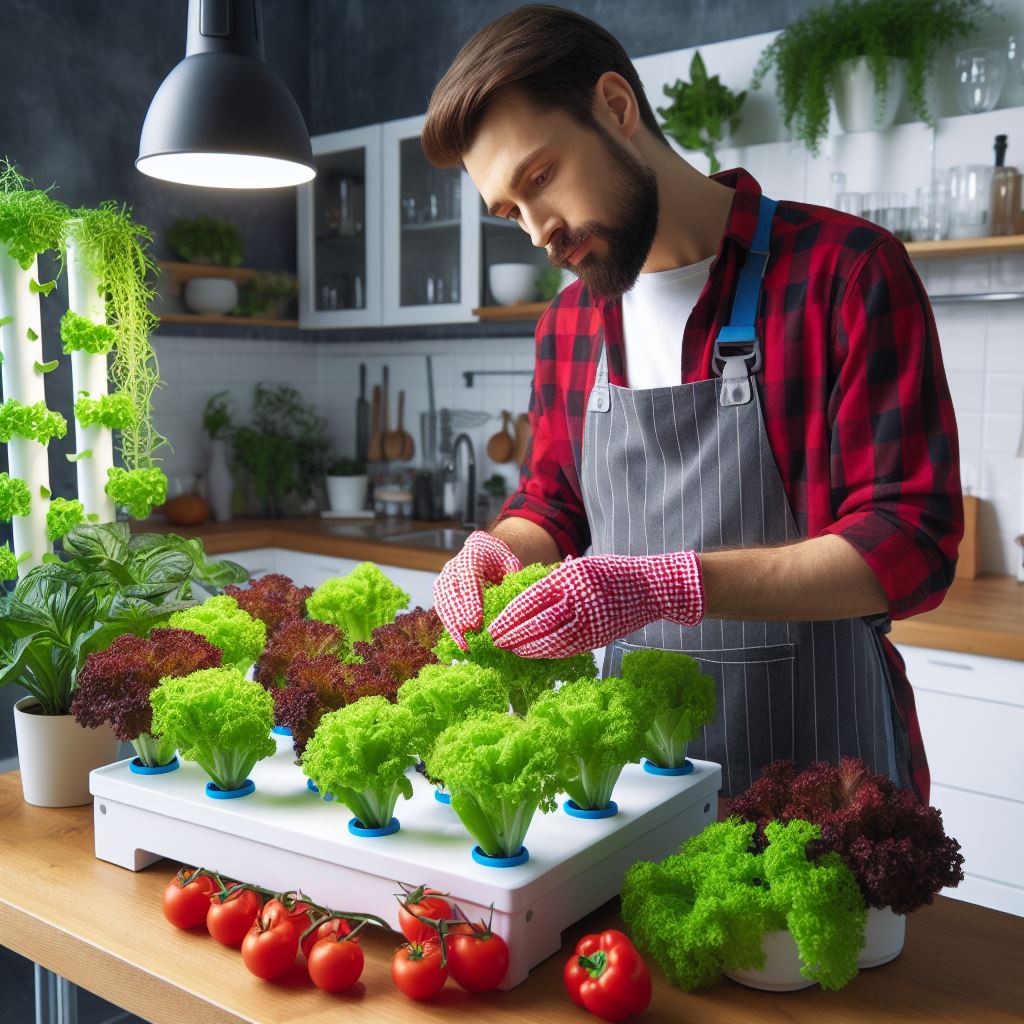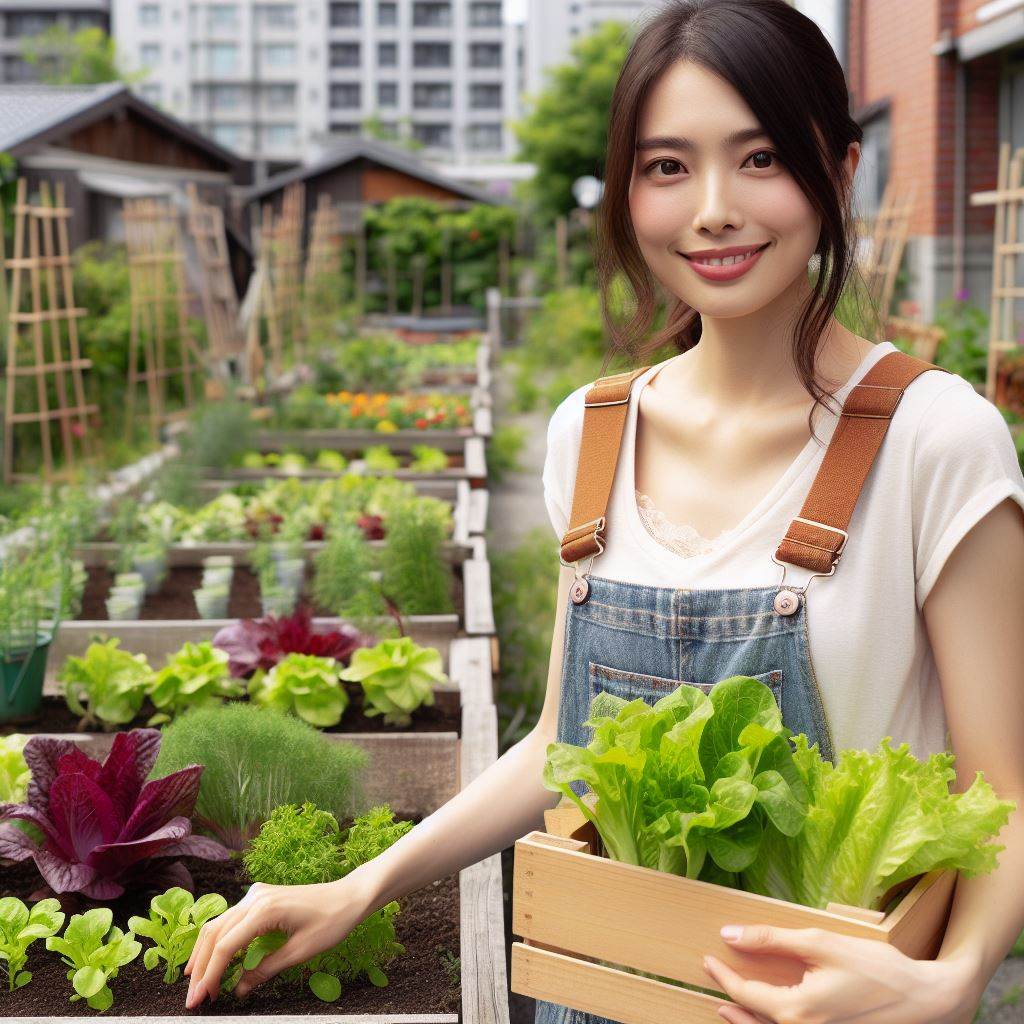Introduction
As the world grapples with environmental challenges, sustainable agriculture emerges as a beacon of hope.
By embracing innovative methods like hydroponics, we can cultivate fresh produce with reduced environmental impact.
Hydroponic systems revolutionize indoor gardening, enabling you to grow vibrant plants without traditional soil.
This blog series delves into the exciting world of hydroponics for your home, empowering you to transform your living space into a flourishing indoor eden.
We’ll unveil the fundamental principles of hydroponics, exploring various system options suited to diverse needs and preferences.
From nutrient delivery methods to plant selection tips, we’ll equip you with the essential knowledge to cultivate a thriving indoor garden.
Furthermore, we’ll address common challenges associated with hydroponics and provide practical solutions to ensure your indoor oasis flourishes.
Embrace the opportunity to cultivate fresh produce year-round, reduce your environmental footprint, and witness the transformative power of hydroponics in your home.
Let’s embark on this journey together, one flourishing plant at a time.
Definition and Types of Hydroponic Systems
A hydroponic system is a method of growing plants without soil, using water, nutrients, and a growing medium.
There are several types of hydroponic systems, each with its own unique characteristics and benefits:
Brief explanation of hydroponics
Hydroponics is a soil-less method of growing plants, where the plants obtain nutrients directly from water.
Nutrient film technique (NFT)
The Nutrient Film Technique (NFT) is a hydroponic system where a thin film of nutrient-rich water continuously flows over the plant roots.
Deep water culture (DWC)
In a Deep Water Culture (DWC) hydroponic system, plant roots are submerged directly in a nutrient solution, often using aquaculture techniques.
Ebb and flow system
Also known as flood and drain system, the Ebb and Flow system involves periodically flooding the plant roots with nutrient solution and then draining it back.
Transform Your Agribusiness
Unlock your farm's potential with expert advice tailored to your needs. Get actionable steps that drive real results.
Get StartedAeroponics
Aeroponics is a high-tech hydroponic system where plant roots are suspended in air and regularly misted with nutrient-rich solution.
Comparison of different systems
Each hydroponic system has its own advantages and disadvantages:
- The NFT system is efficient in water and nutrient usage but requires regular monitoring and maintenance.
- The DWC system allows for excellent oxygenation of roots but can be challenging to manage in larger setups.
- The Ebb and Flow system is versatile and suitable for a wide range of plants, but it may require more water compared to other systems.
- Aeroponics provides optimal oxygenation and nutrient absorption, but it requires more technical expertise and equipment.
Choosing the right hydroponic system depends on various factors, including the type of plants, available space, budget, and level of experience.
It is essential to research and experiment before deciding on a specific system.
Essentially, hydroponic systems offer an efficient, space-saving, and controlled method of indoor gardening.
Understanding the different types of hydroponic systems provides a foundation for exploring the possibilities and benefits of home hydroponics.
Whether you opt for NFT, DWC, Ebb and Flow, or Aeroponics, the key is to provide the right balance of water, nutrients, and care for your indoor Eden.
Read: Hydroponics vs. Soil: What’s Best for You?
Benefits of Indoor Hydroponic Systems
Year-round gardening opportunities
- Indoor hydroponic systems allow for year-round gardening regardless of the outdoor climate.
- With controlled environments, plants can thrive and grow efficiently throughout the year.
- This provides gardeners the opportunity to harvest fresh produce continuously and reduces dependence on seasonal availability.
Water and nutrient efficiency
- Hydroponic systems use up to 90% less water compared to traditional soil-based gardening.
- Nutrients in the water are delivered directly to plants’ roots, minimizing waste and maximizing absorption.
- As a result, hydroponic gardening conserves resources while producing higher yields.
Greater control over plants’ health and growth
- Indoor hydroponic systems offer precise control over environmental factors like temperature, humidity, and lighting.
- This control enables gardeners to create optimal conditions for plant growth and customize the environment to specific plant requirements.
- The ability to adjust and monitor these variables promotes healthy, vigorous growth and minimizes stress factors.
Elimination of soil-borne pests and diseases
- By avoiding soil, hydroponic systems eliminate the risk of soil-borne pests and diseases.
- Without soil, pathogens and insects that typically invade traditional gardens have limited access to plants.
- This reduces the need for harmful pesticides and facilitates organic gardening practices.
Space-saving advantages
- Indoor hydroponic systems can be designed to fit in small spaces, making them ideal for urban dwellers.
- Vertical gardening techniques maximize the use of vertical space, allowing more plants in a limited area.
- This space-saving advantage makes hydroponic systems suitable for apartments, balconies, and other urban environments.
In general, indoor hydroponic systems offer numerous benefits that make them an attractive option for home gardening.
With year-round gardening opportunities, water and nutrient efficiency, greater control over plant health and growth, elimination of soil-borne pests and diseases, and space-saving advantages, hydroponic systems provide a sustainable and convenient way to grow fresh produce at home.
Whether you have limited outdoor space, want to garden regardless of the season, or simply enjoy the benefits of a controlled, efficient gardening system, hydroponics can be a rewarding endeavor for any home gardener.
Read: Water Works: Basics of Home Aquaponics
Setting up an Indoor Hydroponic System
Choosing the right location
- Find a location that receives at least six hours of direct sunlight daily.
- Ensure the area is well-ventilated and has access to a power source.
- Avoid areas with extreme temperature fluctuations, such as near windows.
- Consider the available space and the size of the hydroponic system you plan to set up.
Required equipment and materials
- Purchase a hydroponic system kit or gather the necessary components, including trays, reservoirs, and pumps.
- Obtain grow lights, such as LED or fluorescent, to provide artificial light if natural lighting is insufficient.
- Gather hydroponic growing medium, such as perlite, vermiculite, or coconut coir, for plant support.
- Acquire nutrients designed specifically for hydroponic systems to ensure optimal plant growth.
Selecting suitable plants
- Choose plants that are well-suited for indoor hydroponic cultivation, such as leafy greens, herbs, or tomatoes.
- Consider the available space and the specific requirements of each plant, such as light, temperature, and humidity.
- Start with easy-to-grow plants if you are a beginner, and gradually expand to more challenging varieties.
- Research the specific nutrient needs and growth rates of the plants you intend to grow.
Preparing the nutrient solution
- Measure and mix the hydroponic nutrients according to the manufacturer’s instructions.
- Use a clean container and stir the solution well to ensure all nutrients are properly dissolved.
- Check the pH level of the solution using a pH test kit and adjust it if necessary.
- Monitor and adjust the nutrient solution regularly to maintain the ideal nutrient balance for your plants.
Assembling the hydroponic system
- Follow the instructions provided with your hydroponic system kit to assemble the components correctly.
- Ensure all connections and fixtures are secure to prevent leaks or malfunctions.
- Place the hydroponic trays or pots in their designated positions within the system.
- Set up the irrigation system to deliver the nutrient solution to the plants efficiently.
Lighting and temperature considerations
- Position the grow lights at an appropriate distance from the plants to provide optimal light intensity.
- Monitor and maintain the temperature within the recommended range for the chosen plants.
- Consider using a thermostat to regulate the temperature in the growing area if necessary.
- Observe the plants for any signs of stress due to lighting or temperature issues and make adjustments accordingly.
By following these steps, you can successfully set up your indoor hydroponic system and begin growing your own fresh produce.
Read: Grow More: Vertical Hydroponic Solutions

Maintenance and Care for Indoor Hydroponic Systems
Daily monitoring of water levels and nutrient pH
Regularly check the water levels in your hydroponic system to ensure plants have enough water to grow.
Monitor the pH level of the nutrient solution to maintain optimum plant health.
Nutrient solution replenishment and adjustments
Refill the nutrient solution regularly to ensure plants receive the necessary nutrients.
Adjust the nutrient concentration as needed based on plant growth stages and nutrient deficiencies.
Regular cleaning of equipment
Keep your hydroponic system clean to prevent the growth of algae, bacteria, and other organisms.
Regularly clean the reservoir, pumps, and any other equipment to maintain a healthy environment for your plants.
Preventing and managing common issues
Stay vigilant for common issues in hydroponic systems such as nutrient imbalances, root rot, and pests.
Take preventative measures and address any issues promptly to avoid impacting plant growth and overall system health.
Pruning and supporting plant growth
Pruning is essential to control the size and shape of your plants.
Remove dead or damaged leaves regularly and provide support for taller plants to prevent them from falling over.
Showcase Your Farming Business
Publish your professional farming services profile on our blog for a one-time fee of $200 and reach a dedicated audience of farmers and agribusiness owners.
Publish Your ProfileHarvesting and replanting cycles
Once your plants reach maturity, harvest them based on their specific growth requirements.
After harvesting, clean the system thoroughly and replant with new seedlings to continue the cycle.
Maintaining an indoor hydroponic system requires daily attention to ensure optimum plant growth and system health.
By following these maintenance and care practices, you can enjoy a thriving indoor garden.
Read: Urban Farming: Aquaponics in the City
Common Mistakes to Avoid
In order to ensure the success of your indoor hydroponic system, it is important to avoid making these common mistakes:
Overfeeding or underfeeding plants
It is crucial to provide your plants with the right amount of nutrients for healthy growth.
Overfeeding can lead to nutrient burn, while underfeeding can stunt their growth.
Using the wrong nutrient solution
Each plant has specific nutrient requirements.
Using the wrong nutrient solution can result in nutrient deficiencies or toxicities.
Always research and use the appropriate nutrient mix for your plants.
Ignoring pH levels
The pH level of your hydroponic system affects nutrient availability.
Ignoring pH levels can lead to nutrient lockout, causing nutrient deficiencies even if they are present in the solution.
Neglecting plant diseases and pests
Like traditional soil-based gardens, hydroponic systems are susceptible to plant diseases and pests.
Regularly inspect your plants for signs of trouble and take prompt action to prevent infestations and diseases from spreading.
Inadequate lighting or temperature control
Lighting and temperature are crucial factors for plant growth.
Insufficient lighting can stunt or weaken plants while incorrect temperature control can disrupt their metabolic processes.
Optimize these factors for optimal growth.
Failing to follow proper maintenance routines
Regular maintenance is essential to keep your hydroponic system functioning at its best.
Failing to clean and maintain the system can lead to clogs, nutrient imbalances, and other problems that negatively impact plant health.
By avoiding these common mistakes, you can ensure the success of your indoor hydroponic system and grow healthy, thriving plants right in your own home.
Success Stories and Testimonials
Stories of Successful Indoor Hydroponic Gardens
- Sarah’s indoor hydroponic garden transformed her small apartment into a lush oasis.
- John shares how he successfully grew a variety of vegetables using a hydroponic system in his basement.
- Lisa’s indoor garden not only provides fresh herbs and vegetables but also serves as a beautiful focal point in her kitchen.
- Mark’s hydroponic setup allowed him to grow nutritious greens year-round, even in a cold climate.
- Emily’s hydroponic garden flourished with vibrant flowers, showcasing the beauty of indoor gardening.
Tips and Advice from Experienced Home Gardeners
- Start small and gradually expand your indoor hydroponic garden as you gain experience and confidence.
- Research different hydroponic systems and choose one that suits your available space and desired plants.
- Invest in high-quality seeds, nutrients, and lighting systems to ensure optimal growth and yield.
- Maintain a consistent nutrient solution and monitor pH levels regularly to prevent plant deficiencies.
- Prune and train your plants regularly to promote proper growth and maximize space utilization.
Real-Life Examples of Overcoming Challenges
- Amanda faced the challenge of limited sunlight in her apartment but successfully overcame it by using LED grow lights.
- Mike struggled with controlling pests in his indoor hydroponic garden until he introduced beneficial insects to combat them naturally.
- Jennifer encountered nutrient imbalance issues but solved them by adjusting the nutrient solution based on her plant’s needs.
- David dealt with power outages by investing in a backup generator to ensure his hydroponic system maintained optimal conditions.
- Karen had a limited budget but found creative ways to repurpose materials and build her own DIY hydroponic system.
By sharing inspiring success stories, valuable tips, and examples of overcoming challenges, this section highlights the immense potential of indoor hydroponic systems for home gardens.
Whether you have limited outdoor space, want to grow plants year-round, or simply enjoy the beauty of indoor gardening, hydroponics offers a rewarding and efficient solution.
Take inspiration from these stories and experiences, and start your own indoor Eden today!
Conclusion
Indoor hydroponic systems offer numerous benefits, such as space efficiency, water conservation, and year-round gardening.
I encourage all readers to give hydroponics a try and experience the joy of growing their own food.
So, are you ready to embrace the future of homegrown goodness? Take the plunge into hydroponics!
Research different systems, find the perfect fit for your space, and witness the magic of life bloom right under your roof.
Indoor hydroponic systems provide a sustainable and convenient solution for home gardening. Start your own indoor Eden today!
Remember, even small beginnings can lead to bountiful harvests. Start small, experiment, and discover the joy of nurturing your own indoor oasis.
Happy growing, fellow urban gardeners! Let your home transform into a verdant haven, one thriving seedling at a time.




